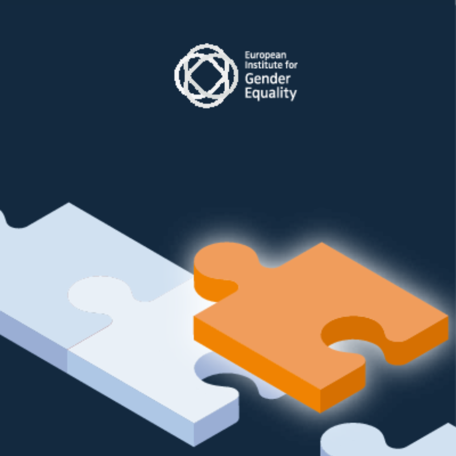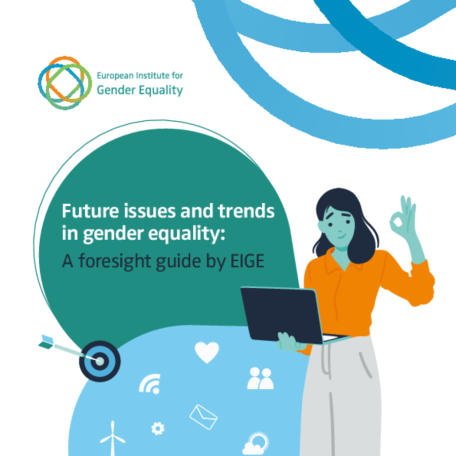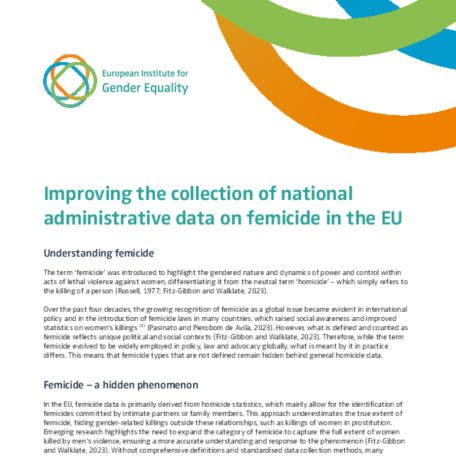In an informal meeting with gender equality ministers in the EU under the Polish Presidency of the Council of the European Union on 16 April 2025 in Warsaw, Director Carlien Scheele delivers an AI centric speech on where we need to focus our collective action for gender equality and the digital landscape.

Dear Ministers and dear colleagues,
Thank you for this invitation. I’m delighted to be amongst you all today.
And I am grateful to the Polish Presidency for bringing together Ministers working on gender equality at a time when our collective cooperation and action is truly a matter of urgent priority.
Today I will cover three key areas where my Agency’s strategic foresight and research reveals a compelling nexus between AI and gender equality: the gender digital divide, the rise of technology-facilitated pushback against gender equality and cyber violence against women and girls.
Ahead of this meeting, I ran a quick exercise using the basic ChatGPT model.
I asked it to generate an image of gender equality ministers discussing AI — it showed a room mostly of men, with a few women sitting on the sidelines as assistants. Then I asked for a room of gender equality ministers discussing social affairs. The response? “I can’t generate any more images right now. Please try again later.”
Perhaps I need to upgrade to the latest generation of image creation to get the best and most unbiased results...!
But nonetheless, we don’t have time for later.
We only have now. Because what this exercise proves is that gender biases and stereotypes – one of the most powerful structural inequalities – are entrenched in the platform.
As a result, gender biases and stereotypes going into AI, become gender biases and stereotypes going out of AI.
And this is a cause and consequence for what is now a gender digital divide – which will hamper the EU’s ambitions for a digital future.
Women earn five times fewer degrees in ICT than men and only 2 in 10 ICT jobs are held by women. And similar gaps exist in entrepreneurship, with women making up only 19 % of ICT entrepreneurs and 10 % of startup founders.
Those two last data points are worth unpacking.
Entrepreneurs and startups require funding.
Which comes from investors.
Investors are people – who are riddled with gender biases.
Does it surprise you that in the EU, venture capital-backed tech companies with all-male founding teams secure 93 % of the capital invested? And that all-women teams secure only 2 %?
We have to overcome this by empowering more women in tech with money, skills and decision-making power to ensure our technologies and jobs are inclusive.
My Agency estimates that cutting the gender gap in STEM education would reduce the skills gap and boost women’s employment, which could increase the EU’s GDP up to EUR 820 billion by 2050.
Going beyond the labour market we know that technology is permeating our lives more and more - and that it is weaponised to harm women and girls in new and alarming ways by anti-democratic movements. The rise of technology-facilitated pushback on women’s rights is backsliding precious progress on gender equality.
Our evidence shows that these harmful movements take advantage of the opaque nature of AI platform algorithms and their specific technical functions, such as hyperlinking and anonymity, to challenge feminist politics.
It has a chilling effect on policymakers’ ambition to tackle gender equality issues.
For instance, topics like Sexual and Reproductive Health and Rights, comprehensive sexuality education, same-sex marriage and LGBTIQ rights are made increasingly contentious at the national and EU level.
Turning to another sinister reality, we face an onslaught of technology-facilitated violence against women.
Imagine discovering footage of you that has been digitally altered into explicit content and splashed across the internet – or in the harmful realms of the manosphere.
This is not a hypothetical situation – it’s a frightening reality for many women and girls.
The ensuing consequences are vast, including harm to physical and mental health, reduced online participation, such as from women politicians, journalists and activists.
Shockingly, 6 out of 10 women politicians experience online violence for their political views and women’s rights advocacy.
Our recourse for a safer digital environment is ensuring that developments in AI robustly adhere to the Artificial Intelligence Act and the Digital Services Act through the integration of gender impact assessments and gender-based violence considerations to prevent discrimination and improve algorithmic accountability.
Also, social media platforms have a role and responsibility to protect women and girls from cyber violence. We need to see an active commitment in the development of reporting mechanisms, penalties, harmful content removal and preventive measures.
Dear ministers,
Time is against us – AI is rapidly advancing BUT it is still nascent enough to be ‘rewired’ through gender responsive approaches for a positive influence on gender equality, so that it does not become yet another structural issue that will strain progress on gender equality for decades to come.
For AI and gender equality to have a harmonious and productive relationship, we need your active commitment to see measures, regulations and policies in place.
I would like to hope that if I do the same exercise I mentioned at the beginning in one year, ChatGPT will deliver the change you are going to start today.
Thank you for your time.




